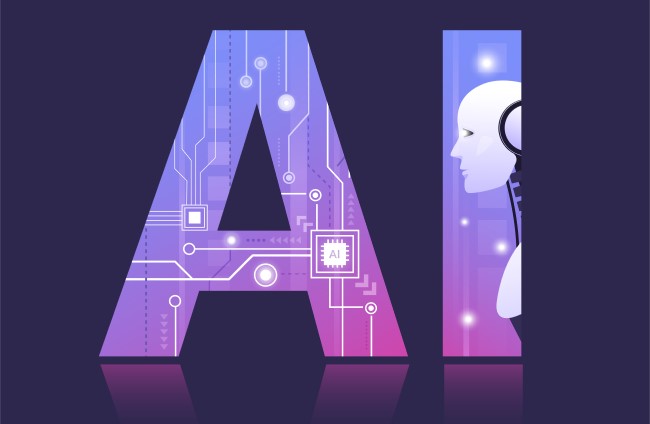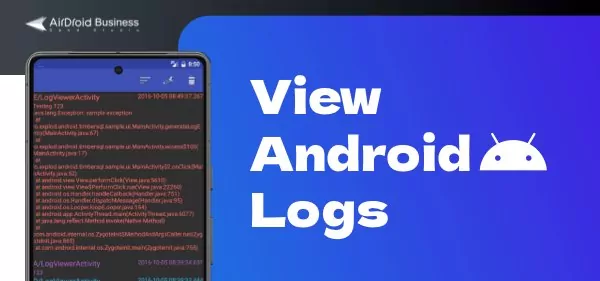Fact Uncovered: Does ChatGPT Learn from Users?
As an artificial intelligence system, ChatGPT was designed by Anthropic to have conversations with people. In the realm of artificial intelligence, ChatGPT has emerged as a prominent language model capable of generating human-like text. As users engage with ChatGPT, a common question arises: Does ChatGPT learn from users? In this article, we will explore the fascinating world of user interaction and its impact on ChatGPT's learning capabilities.
- Part 1: Does ChatGPT Learn from Users?
- Part 2: Impact of ChatGPT Learn from User Interaction
- Part 3: What Are ChatGPT's Learning Process?
- Part 4: Does ChatGPT Continue to Learning in Future?
- Part 5: The Limitations of ChatGPT's Learning Capabilities
- Part 6: Tips: How to Improve AI Assistants Like ChatGPT?
- Part 7: Frequently Asked Questions
Does ChatGPT Learn from Users?
Yes, ChatGPT is a machine learning model that can learn from its interactions with users. However, ChatGPT doesn't learn from users directly. ChatGPT use user conversations to improve future versions of the model, so ChatGPT does learn from users indirectly in the sense that your chats will help the next GPT model updates be more effective.
OpenAI, the organization behind ChatGPT, has introduced user interaction as a powerful training signal. They have designed a feedback system, allowing users to provide feedback on problematic model outputs. This feedback is then used to fine-tune and improve ChatGPT's responses.

In addition to feedback, ChatGPT also learns from user demonstrations. OpenAI has developed a technique called "Reinforcement Learning from Human Feedback" (RLHF), where users can guide the model by providing example conversations. These demonstrations help ChatGPT understand desired behaviors and improve its responses over time.
Impact of ChatGPT Learn from User Interaction
User interaction plays a vital role in shaping ChatGPT's learning process. By incorporating user feedback and demonstrations, ChatGPT becomes more adept at generating relevant and contextually appropriate responses. The iterative nature of this learning allows the model to adapt and improve with each user interaction.
Enhanced Responsiveness: ChatGPT's ability to learn from users enables it to respond more effectively to diverse queries and prompts. As users engage with the model, it becomes better equipped to understand and generate relevant responses.
Reduced Bias and Inaccuracy: User feedback helps address biases or inaccuracies that may arise in ChatGPT's responses. By flagging problematic outputs, users contribute to refining the model and reducing potential biases or misinformation.
Personalized Interactions: ChatGPT's learning from user demonstrations allows it to understand and adapt to individual preferences. This personalization enhances the user experience, making interactions with ChatGPT feel more tailored and relevant.
Continuous Improvement: User interaction provides a continuous feedback loop, fostering ongoing improvement in ChatGPT's capabilities. As more users engage with the model, its responses become more refined, accurate, and aligned with user expectations.
ChatGPT's Learning Process: Machine Learning and Neural Networks
ChatGPT is an AI assistant created by Anthropic to have natural conversations. It uses machine learning and neural networks to understand language and respond appropriately.
Machine Learning
Machine learning is a method of training computers to learn and act without being explicitly programmed. ChatGPT is trained on a huge dataset of conversations to identify patterns and relationships, allowing it to generate new responses based on its training.
Neural Networks
Artificial neural networks are algorithms that detect complex patterns in large datasets. They are inspired by the biological neural networks in the human brain. ChatGPT uses a neural network with layers of "neurons" that connect and assign weights to different features to determine the best responses.
Does ChatGPT Continue to Learning in Future
As we know, ChatGPT can learn from its interactions with users. However, ChatGPT does not actually continue learning or improving from interactions with individual users.
Limited Learning Capabilities
While ChatGPT can have complex conversations and even express opinions on certain topics, it has limited learning abilities. Its responses are based entirely on its initial training. ChatGPT does not store personal information about users or learn from individual conversations.
- ChatGPT cannot adapt its personality or knowledge over time based on conversations. It has a static set of capabilities defined by Anthropic prior to release.
- No data from user interactions is collected or used to retrain ChatGPT's model. Its training process was completed by Anthropic before launch.
- ChatGPT cannot truly master new skills or subjects through practice and repetition with users. It only has access to information provided in its original training data.
Privacy and Safety
By limiting ChatGPT's learning abilities, Anthropic is able to better ensure users' privacy and provide safeguards against potential harms from AI. Without continued learning from interactions, ChatGPT has less opportunity to pick up sensitive personal information or be manipulated for malicious purposes.
While ChatGPT cannot match human intelligence, its fixed set of skills makes it a useful and trustworthy assistant for many basic tasks. By clarifying ChatGPT's limited learning capabilities, Anthropic provides transparency into how the system works and what users can expect from their interactions.
The Limitations of ChatGPT's Learning Capabilities
ChatGPT does get smarter over time based on interactions with users, but its learning capabilities have some key limitations.
Limited Training Data
ChatGPT was trained on a finite dataset, so it has a limited knowledge base. It does not actually understand the real world in all its complexity. ChatGPT cannot learn from experiences it has not had access too. As AI continues to progress, systems will need far more data to achieve human-level intelligence.
Limited Creativity
While ChatGPT can engage in complex conversations and even show a sense of humor at times, it lacks true creativity. It recombines elements of what it has been exposed to in new ways, but it does not have an innate ability to imagine entirely new concepts or meanings. Human minds have a kind of spark that AI has yet to achieve.
Narrow Learning
ChatGPT learns through narrow, task-specific training. It becomes better at responding based on the type of conversations and questions users engage in, but it does not learn broadly or flexibly. Its knowledge and skills are confined to what it has been programmed to do. ChatGPT cannot suddenly start learning physics or how to play chess if it was not designed for those purposes.
Tips: How to Improve AI Assistants Like ChatGPT?
Many companies are working to improve AI chatbots and assistants like ChatGPT to make them smarter and more capable. Several approaches are being taken:

1 Increasing Training Data
The more data ChatGPT is trained on, the more it can learn. Companies are gathering huge datasets of information from various sources to help expand ChatGPT's knowledge in different domains.
2 Reinforcement Learning
ChatGPT learns through trial-and-error interactions with people. When users provide feedback, ChatGPT can determine how to improve its responses. Companies are developing better reinforcement learning methods so ChatGPT can learn more effectively from user interactions and feedback.
3 Transfer Learning
Transfer learning involves applying knowledge ChatGPT has gained in one domain, like open-domain conversations, to a new domain, like customer service. Companies are working on ways to leverage transfer learning so ChatGPT can quickly pick up new skills.
4 Continuous Updates
Companies frequently release updates to ChatGPT to fix issues, expand its knowledge, and improve its abilities. Regular updates help ensure ChatGPT is using the latest techniques and providing the best possible experience to users. Updates may be large or small, but collectively they make ChatGPT smarter and smarter over time.
Any ChatGpt Alternative?
Yes. ChatInsight is another AI chatbot that aims to provide helpful and informative responses to a wide range of inquiries. Like ChatGPT, it uses natural language processing to engage in conversations and provide assistance on various topics. Both chatbots utilize AI technology to understand and respond to user input, making them valuable tools for information and support.
Conclusion
User interaction plays a crucial role in ChatGPT's learning process. Through feedback and demonstrations, users contribute to refining and enhancing the model's capabilities. This interactive learning approach empowers ChatGPT to generate more relevant, accurate, and personalized responses over time. As users engage with ChatGPT, they become active participants in shaping the future of AI language models, fostering a collaborative and dynamic learning environment.
While ChatGPT is an advanced AI, companies are continuously working to enhance its intelligence to have more natural and helpful conversations. Through increased data, improved learning methods, transfer learning, personalization, and frequent updates, ChatGPT is getting smarter all the time.
Frequently Asked Questions












Leave a Reply.